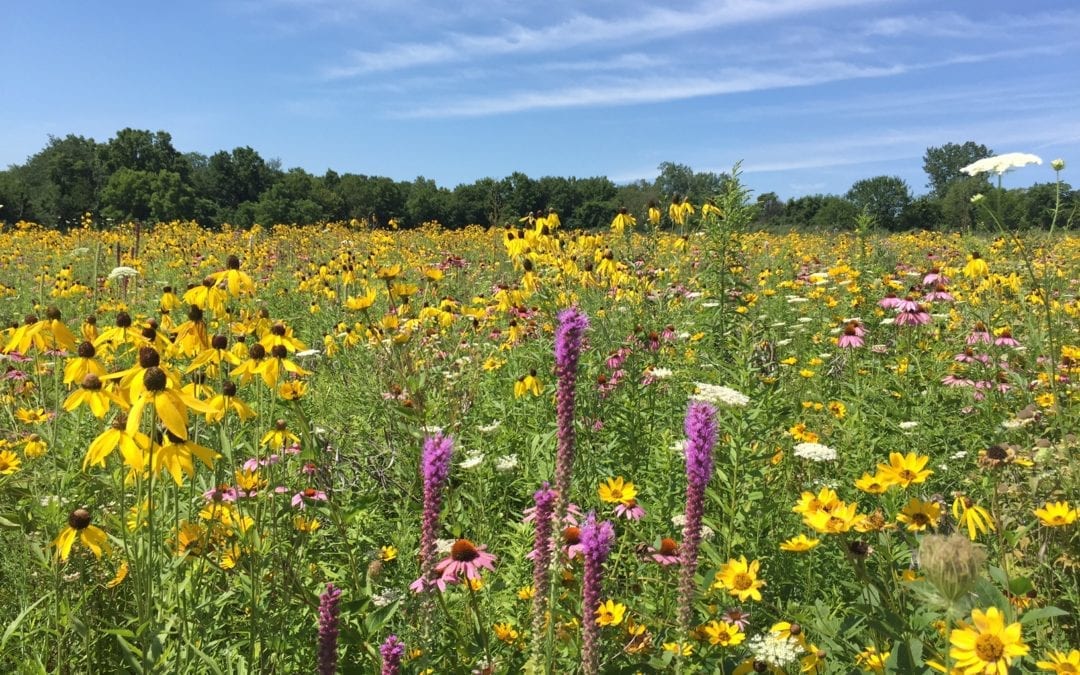By: Lisa Briggs | June 18th, 2019
The Summer Solstice is tomorrow and that means the glorious month of June is on the wane. We’ll soon be moving into the traditional Dog Days of Summer. You may think that the sunny days in July and August are so called is because we all feel as though we’re swaddled in fur, but the period is actually named after Sirius, the Dog Star.
Sirius, a star in the constellation Canis Major, or the Big Dog, happens to be the brightest star in the night sky. During the summer months, Sirius rises and sets with the sun, and in late July it is in conjunction with the sun. In fact, Sirius is so bright that the ancient Romans believed that its heat was added to the heat of the sun, creating a stretch of hot and sultry weather. They named this period of time, from twenty days before the conjunction to twenty days after, the “dog days.” The conjunction of Sirius with the sun changes with latitude and the gradual drifting of the constellations. This year, the dog days occur during the period from July 12th to August 20th.
The often hot and dry weather that we experience during the dog days can be hard on your garden. Many plants look tired and your borders might seem a bit boring after the stunning color of May and June. But it doesn’t have to be that way. There are plenty of beautiful, colorful plants that are at their peak in mid to late summer.
Many of the native prairie plants will be starting to flower soon. Besides being drought tolerant, they attract birds and butterflies. To get a feel for the natural beauty and diversity of prairie flowers and grasses visit one of the local prairies in the Arboretum or Schumacher Prairie just east of Waunakee. And it just happens that lots of prairie species make fine additions to perennial gardens.
Swamp Milkweed, Asclepias incarnata, is a favorite of monarch butterflies and is the showiest of our native Milkweeds. And though this beautiful rose-pink bloomer is most at home in marshes and wet meadows, it will adapt to your perennial border with ease.
The Prairie Coneflower, Echinacea pallida, puts on an impressive show of bloom from late June into August. This tough native is a magnet for finches. The pale rose-purple petals drape dramatically from an orange cone. And don’t forget about the nati-vars, or cultivars-of-a-native, of the Purple Coneflower, E. purpurea. There are dozens of colors, from crisp white to blazing red.
For a bold, vertical statement, look no further than Gayfeathers, Liatris cylindracea and L. pycnostachya. Also called Blazing-star, these bright magenta flowers are butterfly magnets. Monarchs, Painted Ladies and Fritillaries, as well as hummingbirds, are just a sample of the visitors Liatris might attract to your yard.
And finally, Culver’s-root, Veronicastrum virginicum, is a personal favorite. At 5-feet high plus, its pale pink candelabras of flower spikes will certainly make a statement in the back of your borders and will tolerate part shade. Look for ‘Fascination’, a variety with deep rose-pink blossoms.
Of course, a few prairie flowers do not a prairie make, but it is important that we treasure our native plants. Let them inspire you to appreciate the Dog Days. We may not like them now, but we’ll miss them next January.

